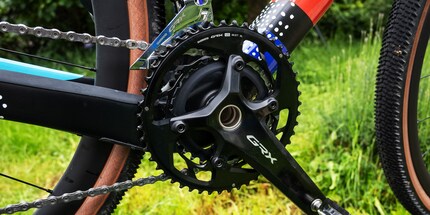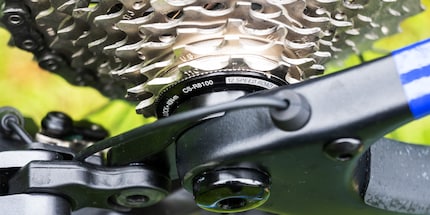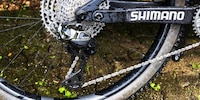
Product test
I’m in love with Shimano’s new XTR Di2 components
by Patrick Bardelli

This is my first time riding an electronic groupset. I’m blown away! The new Shimano GRX Di2 for gravel bikes has a new fan.
The name’s a bit unwieldy – GRX Di2 RX825. That’s what Shimano’s called its new electronic groupset for gravel bikes. Shifting from the small to the large chainring and back again is accompanied by a subtle «bzzzt», as the chain glides over the 12-speed cassette with a soft click. There’s nothing unwieldy going on here. Quite the opposite, in fact.
Shifting gears has never been this smooth for me. And smoothness sums up the whole groupset. It’s been available in stores since 23 May.
Last autumn, I was given the new mechanical GRX to test for a few days. I covered 70 kilometres and would’ve loved to have done more before returning it. But hey.
This time I was given a little more time to test the characteristics (I’d call them advantages) of the new gearshift. All in all, I cycled about 110 kilometres and roughly 1,700 vertical metres. Not bad, I’d say. With the revised shift lever design, a front derailleur designed for thicker tyres and the adapted rear derailleur, the new GRX 2x12 groupset uses Shimano’s proven Di2 technology, which has already been around for 15 years.
You can find detailed information on this here and here.
The shift lever and rear derailleur are connected via Bluetooth, so there are no shift cables. This makes the new GRX Di2 cockpit cable-free. The brake cables are routed internally through the handlebars and stem. Visually, this is, erm, smooth. But it also makes bike mechanics uneasy. At least my one. He recently told me how many extra hours this can generate for repairs that would normally be minor. We’re talking an extra hour or two on your bill at least.
According to Shimano, their gearshift design has been revised. The rounder shape makes the transition from the handlebars to the grips softer, creating a larger grip surface to avoid pressure points. Two replaceable button cell batteries (2 x CR1632) are installed in each of the levers, with an expected service life of 3.5 to 4 years.
The rear derailleur also has an integrated stabiliser for maximum chain safety. It’s operated with an on/off switch so that the rear wheel can be removed easily and without pulling on the chain in the event of a puncture. I haven’t tested this function yet. When switched on, the drivetrain is under additional tension, which enables smoother handling and precise gear changes. It also prevents the chain from snapping.
However, such technical aids are not without controversy, because correct gear shifting is a skill you need to learn. But if you like these kinds of features, go ahead. And if you don’t, then don’t. Each to their own.
As mentioned, I had no previous experience with an electronic gearshift. But there’s always a first time and that can be summarised in one word: great. With the exception of the app and the somewhat fiddly multifunction button, everything impressed me.
The rear derailleur (310 g), front derailleur (142 g), battery (53 g) and the brake/shift levers (207 g each) together weigh just over 900 grams. This means these components weigh roughly the same as the current mechanical GRX RX820. However, electronic shifting comes at a cost and is way more expensive than mechanical shifting. The rear derailleur alone currently costs almost 200 francs more on Galaxus than its mechanical equivalent.
In my opinion, however, the advantages of electronic shifting outweigh the price difference. For example, fast and precise gear changes, customisable settings and less maintenance as there are no shift cables. The rides with the new GRX Di2 RX825 from Shimano were an all-round positive experience.
From radio journalist to product tester and storyteller, jogger to gravel bike novice and fitness enthusiast with barbells and dumbbells. I'm excited to see where the journey'll take me next.
Interesting facts about products, behind-the-scenes looks at manufacturers and deep-dives on interesting people.
Show all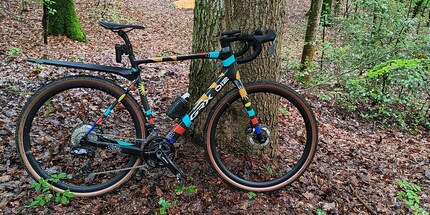
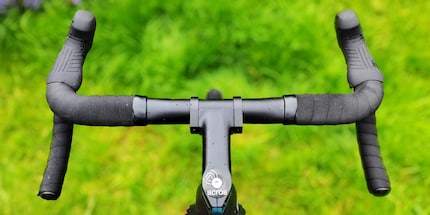
In addition to the charging socket (you need the EC300 charging plug from Shimano to charge), there’s also a multifunction button on the rear derailleur. It’s used to perform Bluetooth pairing and check the charging status, among other things. This is a little awkward and a bit fiddly, as the tiny button is quite hidden. According to the manufacturer, the battery lasts around 1,000 kilometres on a full charge. Of course, this depends on the amount of gear changes and is likely to vary downwards.
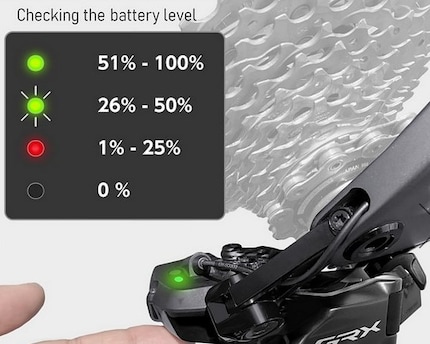
As is standard with the previous GRX groupsets, the RX825 system also features a chainline that’s 2.5 millimetres wider than conventional derailleurs in the road bike category. This allows more tyre clearance, which is particularly a plus for wider gravel tyres or rides involving lots of dirt and mud. The G-One R from Schwalbe with a tyre width of 45 millimetres were fitted to the test bike.
The E-Tube Project cyclist app can be used to customise the Di2 gears for gravel bikes. It can be used to assign buttons or control several automatic switching modes. However, the integration of the new gearshift in the app was not yet fully complete at the time of my test rides. For example, the battery level couldn’t be read. That’s why I can’t say much about it. Except for one thing. At first glance, the app doesn’t seem particularly intuitive to me.
One feature I was able to try out is called Semi Synchronised Shift. It automatically selects the right sprocket for the rear derailleur to enable an optimum gear change when the front derailleur is shifted. According to Shimano, this should give you more control over adjusting the gear combination to your personal cycling style. When shifting from the small to the large chainring and vice versa, this function automatically adjusts the gear. The system then shifts up or down two gears, for example, without an additional gear change. This worked smoothly on my trips.
